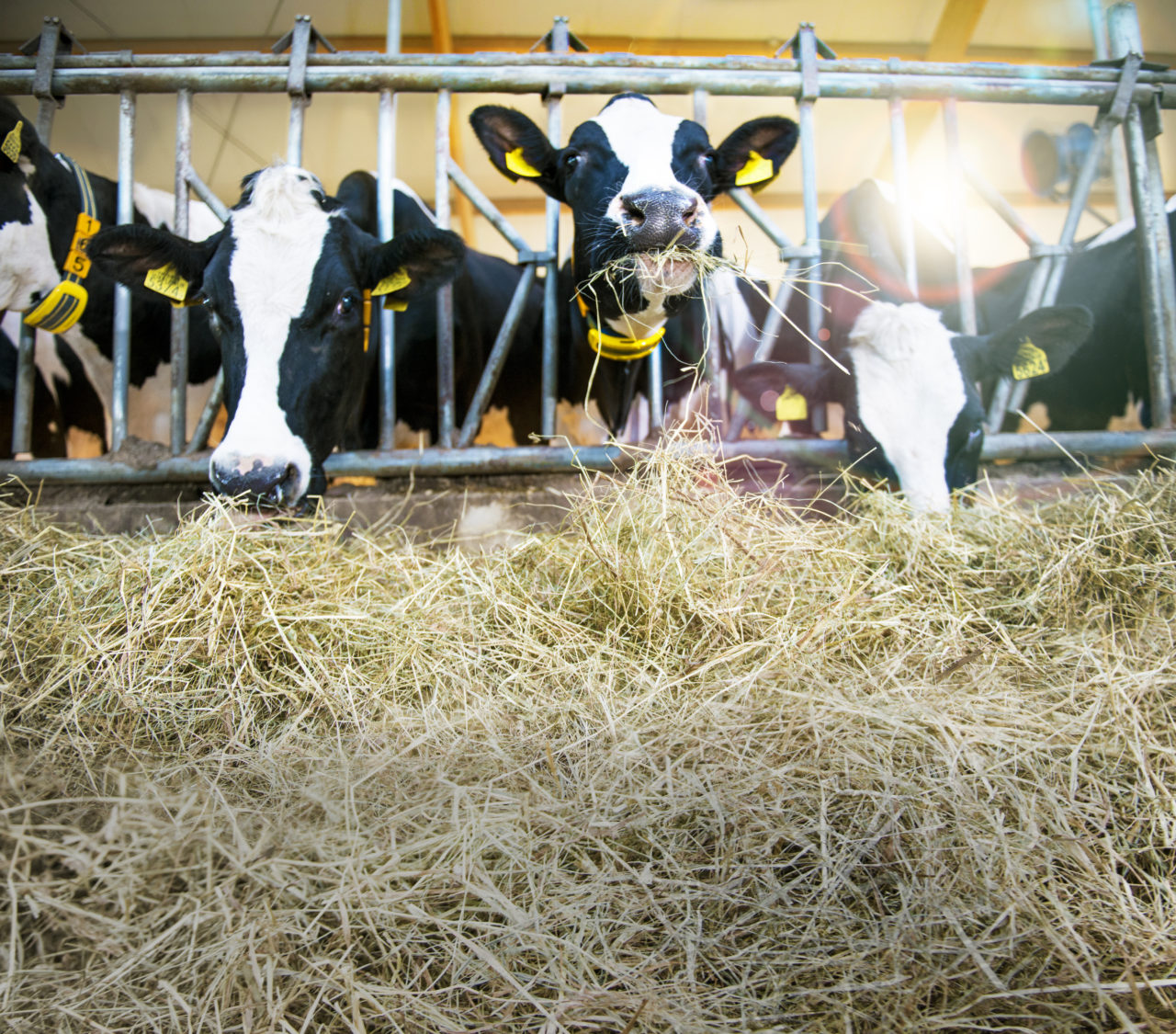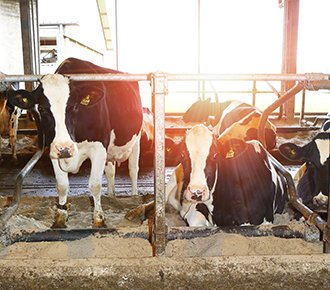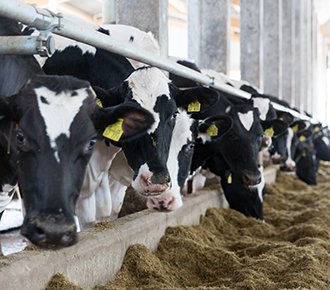- Sense of Sensors study
Sensor recognizes milk fever weeks before calving
Practical study Utrecht University, Wageningen University & Research, Vetvice and Nedap
Sense of sensors in transition management
On a dairy farm, there is certainly no shortage of data. Key performance indicators for milk production and livestock health have come to form an indispensable part of modern-day livestock farming and with the advent of sensors, the flow of data has expanded still further. In a large-scale practical study, Utrecht University, Wageningen University & Research, Vetvice and Nedap are seeking to identify a method that will make it possible to derive practical value from the information provided by sensors. In a series of articles, we will look over their shoulders as they carry out their research. In this edition: milk fever.
Sensor recognizes milk fever weeks before calving
Cows with milk fever start showing abnormal eating behavior six weeks before calving. That is evident from the practical research Sense of Sensors in Transition Management. Cows that are affected by milk fever benefit from oral calcium administration, while infusion is in fact counter-productive.
Cows that are unable to stand as a result of milk fever (hypocalcemia) are a major source of concern for most dairy farmers. It costs them in milk production, as well as the time and attention spent getting the animals back on their feet again.
The practical research Sense of Sensors has shown that cows that are susceptible to milk fever can be identified six weeks before calving. “Abnormalities are most pronounced during eating time. Six weeks before calving, cows that have been affected by milk fever spend up to half an hour a day less eating,” said Peter Hut.
Hut acts as the research coordinator on behalf of the Faculty of Veterinary Medicine in Utrecht.
In part four of this series he not only examines the results of the practical research, but also reveals controversial advice for the treatment of milk fever.
Separating cows with abnormal eating times
Peter Hut considers sensors a valuable tool for detecting cows that are susceptible to milk fever, but he does not believe that it is the only option. Cows consuming less is not the only symptom to look out for. ‘Milk fever is most common among cows with a high condition score that have already calved more than twice. Eating times vary greatly between cows. We should not expect miracles from sensors, but they have taken us a big step forward.’ Hut often advises cattle farmers to separate dry cows with abnormal eating times from other animals, if possible. By feeding this group of cows an extra ration of tasty feed six weeks before calving, the risk of becoming affected by milk fever is considerably reduced, as they are given the chance to consume as much roughage as possible.
Milk fever is a signal
This graph provides an overview into the effect of reduced eating time before calving. Cows that suffer from milk fever – this figure stems from cows with a lower concentration of calcium in their blood – eat significantly less than healthy cows would, six weeks before calving. After calving, it takes a long time for these levels return to normal. According to Hut, a cow that suffers from milk fever also exhibits other symptoms. ‘In a herd of 100 cows, only about 6 or 7 cows suffer from subclinical milk fever. We know from the literature that these animals are 8.9 times more likely to suffer from chronic milk fever, they are 6.5 times more likely to have problems during calving, they are 3.2 times more likely to develop uterine inflammation, they are 3.4 times more likely to have an ulcer disease and they are 8.1 times more likely to develop mastitis.’ Dairy farmers therefore have a lot to gain if the incidence of (subclinical) milk fever can be reduced.

It is known that dry cows benefit from a low-calcium diet. If the feed contains too much calcium, their intestines become too lazy and do not absorb the calcium efficiently. When dry, the animals require far less calcium, because they are not producing any milk at that time. After calving, they require a lot of calcium for the production of colostrum and milk. If the intestines cannot fulfil this need through the feed consumed, the cow will get milk fever. Most dairy farmers are aware of this and they take this into account when rationing. According to Hut, the one aspect that often goes wrong is the introduction of this method with a herd of lactating animals. “You often see that dairy farmers let the cows get used to the rations for lactating cows again a few days before calving. It appears, however, that this actually slows down the adjustment of the rumen papillae. By only starting with blocks and dairy cattle rations after calving, the animal develops considerably larger rumen papillae and can absorb more nutrients from the ration. It also prevents the intestines from becoming unnecessarily lazy in absorbing calcium just before calving.”
Calcium infusions are counterproductive
Things often go wrong in the treatment of milk fever, because, according to Hut, calcium infusion is counterproductive as it disrupts the calcium metabolism. “The brain registers a high calcium concentration in the blood, which causes it to release the hormone PTH through the parathyroid gland. This is a signal to warn the intestines to stop absorbing calcium, as high levels of calcium are present at that moment.” Data from a clinical trial appears to show that the lowest calcium levels in infected cows occur 48 hours after calving. Hut advises dairy farmers to administer calcium orally, e.g. in the form of pills. “You cannot easily overdose in this manner, because the calcium ends up in the bloodstream via the gastrointestinal tract.” This method should not be used on cows that are no longer alert, as an infusion is needed to treat such an animal. Vitamin D can also aid in the absorption of calcium, but Hut mainly recommends a low-calcium dry ration and oral intake of calcium around the calving period.

Dairy farmer Bert Versteeg:
“A few days before calving, eating time is clearly under pressure”
The eating behavior of cows has been registered through Nedap Smarttags at Bert Versteeg‘s dairy farm. The dairy farmer from Bornerbroek in the Netherlands sees a clear connection between eating behavior and milk fever. “I don’t look at the data collected by the sensors every day, but when milk fever is identified I always look back at the data. A few days before calving you will notice that eating time is clearly under pressure.” Versteeg milks 120 Holstein cows that produce an average of 9,100 kg of milk with 4.65% fat and 3.75% protein. Until recently, milk fever was encountered all too frequently on the farm. “’We have returned to a low-calcium ration and we now feed them hammered hay instead of hacked hay. Hammered hay is shorter and finer and we hope to make the ration tastier in this manner, thereby increasing feed intake.” The sensors provide Versteeg with an indication as to whether this is working or not. “The system is not refined enough to get an alert when a cow runs the risk of picking up milk fever. We need to keep a closer eye around eating time, especially with older cows that are in a good condition.”
Related articles
Read more articles about the large-scale practical study Sense of Sensors in Transition Management.



